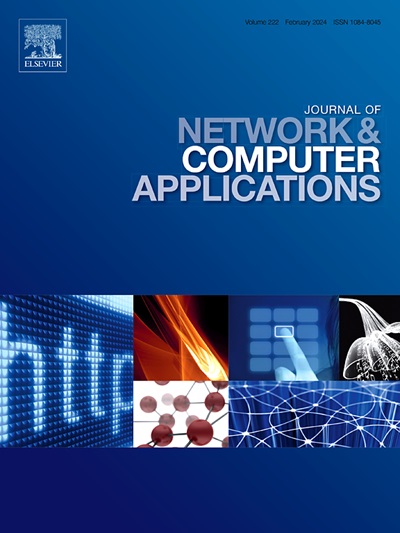KLCMD: K_Length Clustering for Miner Detection on the blockchain social networks to increase the information propagation speed
IF 8
2区 计算机科学
Q1 COMPUTER SCIENCE, HARDWARE & ARCHITECTURE
引用次数: 0
Abstract
Information propagation speed on blockchain social networks depends on activation of users on social network and blockchain network as well. Many researches have been done to increase information propagation speed on social networks. Most of these methods consist of finding influential nodes by different methods to propagate information by these nodes. Some researches have been done to increase information propagation speed on blockchain network. These methods consist of modifying validation of blocks, compressing blockchain, removing redundant information, using another consensus algorithm and so on, still, there is no proper method to increase information propagation speed on both of blockchain and social network. In this paper K_Length Clustering for Miner Detection has been proposed for this purpose. It comprises of two clustering and miner detection phases for information propagation on blockchain social networks. In this method a new partition-oriented clustering has been proposed to cluster users of the social network then the suitable user as miner has been chosen for each cluster, in contrast existing methods just use the blockchain network features for miner selection process which it can be unfairly. In this method speed of information propagation has been increased on both networks. This method has been compared with other consensus algorithms and partition-oriented clustering methods. Experimental results show that our approach has improved the speed of information propagation on both of them. Speed improvement in compare of consensus methods is minimum 5.97 % and maximum 6.10 %, in compare of clustering methods is minimum 0.8 % and maximum 46.35 %.
KLCMD:在区块链社交网络上进行矿工检测的K_Length聚类,以提高信息传播速度
b区块链社交网络上的信息传播速度取决于用户在社交网络和区块链网络上的激活程度。为了提高信息在社交网络上的传播速度,人们做了很多研究。这些方法大多是通过不同的方法找到有影响的节点,并通过这些节点传播信息。为了提高区块链网络的信息传播速度,人们做了一些研究。这些方法包括修改区块验证、压缩区块链、去除冗余信息、使用另一种共识算法等,但在区块链和社交网络上都没有合适的方法来提高信息的传播速度。为此,本文提出了用于矿工检测的K_Length聚类。它包括两个聚类和矿工检测阶段,用于区块链社交网络上的信息传播。该方法提出了一种新的面向分区的聚类方法,对社交网络用户进行聚类,然后为每个聚类选择合适的用户作为矿工,而现有方法仅使用区块链网络特征进行矿工选择过程,这可能是不公平的。这种方法提高了信息在两个网络上的传播速度。该方法与其他共识算法和面向分区的聚类方法进行了比较。实验结果表明,我们的方法提高了两者的信息传播速度。一致性方法的速度提升最小为5.97%,最大为6.10%;聚类方法的速度提升最小为0.8%,最大为46.35%。
本文章由计算机程序翻译,如有差异,请以英文原文为准。
求助全文
约1分钟内获得全文
求助全文
来源期刊

Journal of Network and Computer Applications
工程技术-计算机:跨学科应用
CiteScore
21.50
自引率
3.40%
发文量
142
审稿时长
37 days
期刊介绍:
The Journal of Network and Computer Applications welcomes research contributions, surveys, and notes in all areas relating to computer networks and applications thereof. Sample topics include new design techniques, interesting or novel applications, components or standards; computer networks with tools such as WWW; emerging standards for internet protocols; Wireless networks; Mobile Computing; emerging computing models such as cloud computing, grid computing; applications of networked systems for remote collaboration and telemedicine, etc. The journal is abstracted and indexed in Scopus, Engineering Index, Web of Science, Science Citation Index Expanded and INSPEC.
 求助内容:
求助内容: 应助结果提醒方式:
应助结果提醒方式:


